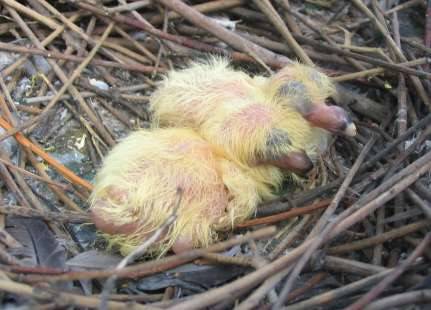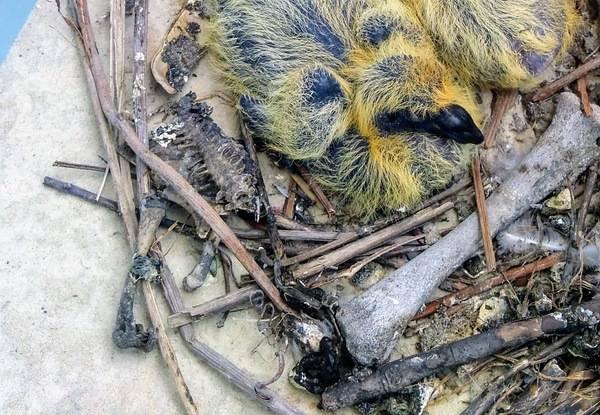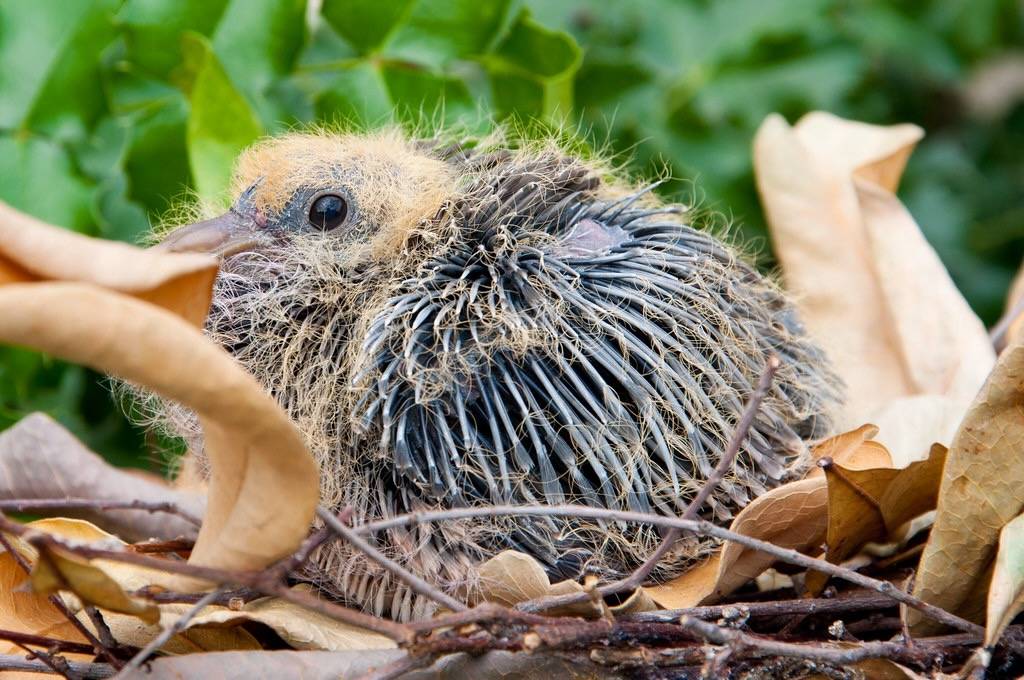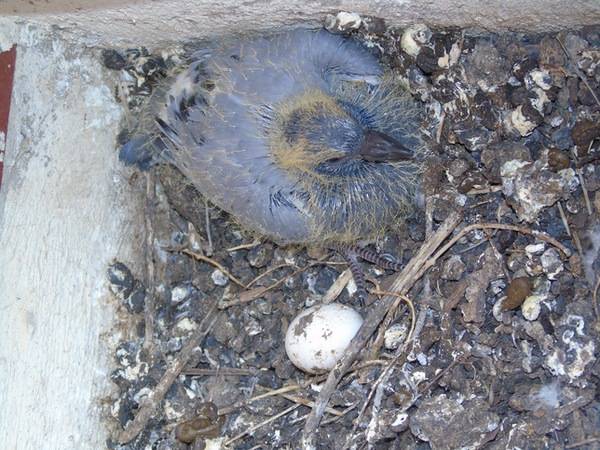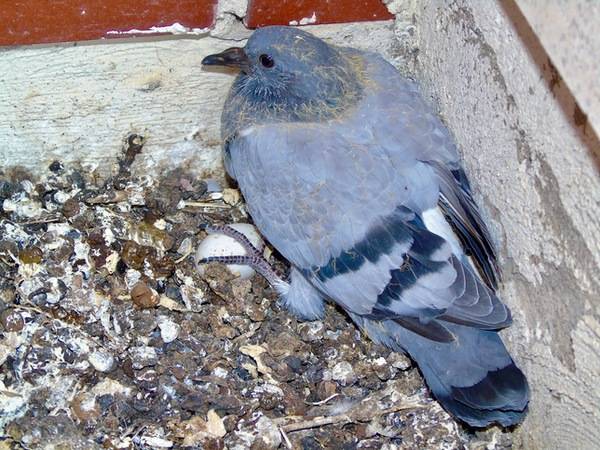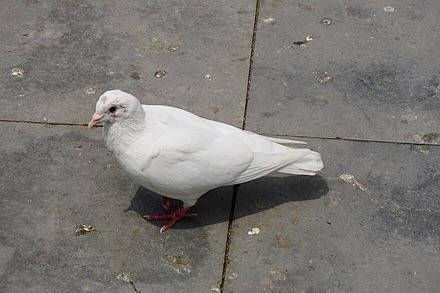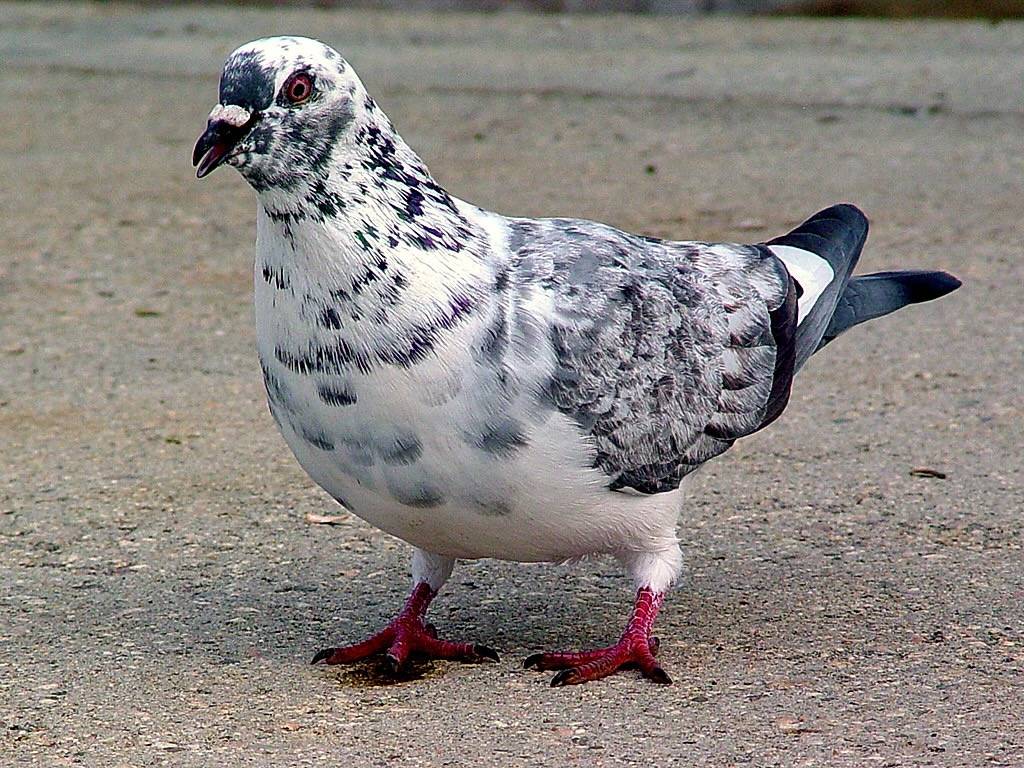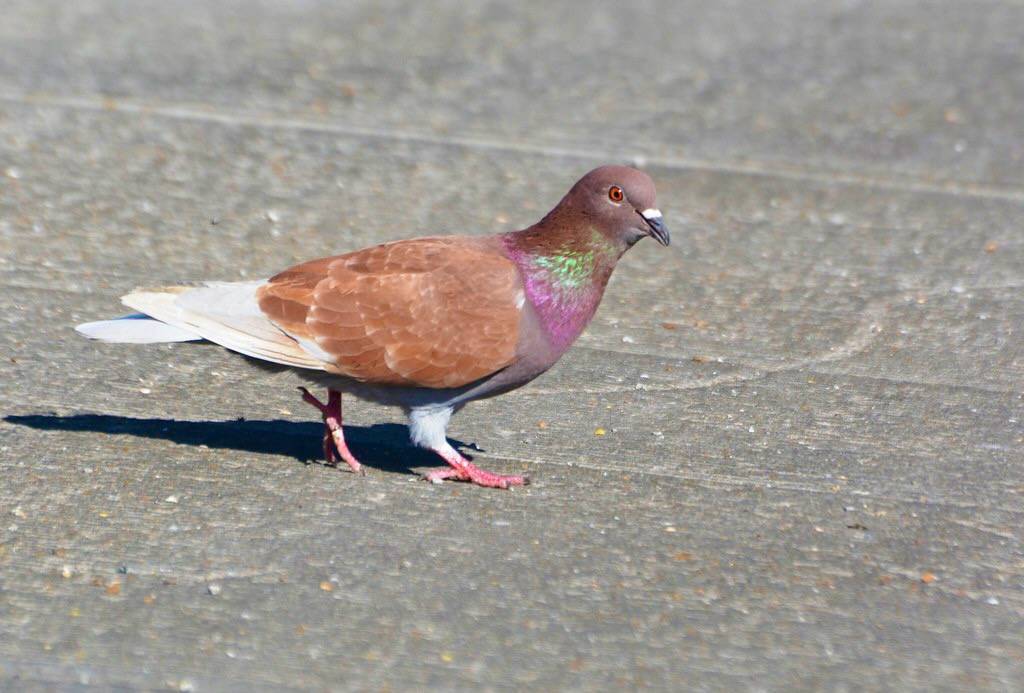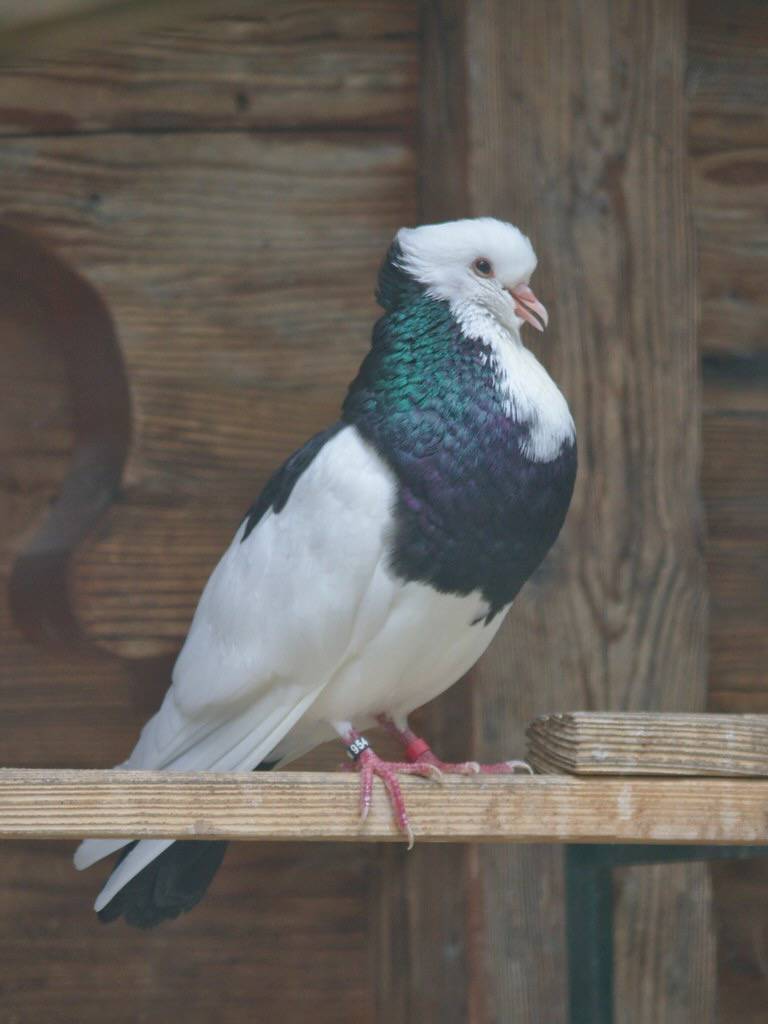Rock Pigeon (feral)
Although small flocks of feral Rock Pigeon regularly fly about in nearby Pawtuxet Village, it has only been spotted a handful of times at Salter Grove according to data from 2002 through 2022. Sightings were usually of just a few birds flying through, probably because the park lacks the tall vertical structures favored by this cliff-dwelling species.
Unlike its slimmer relative the Mourning Dove, which perches comfortably on tree branches when not foraging on the ground, the plumper and weak-footed Rock Pigeon prefers to rest on slanted roofs when cliff ledges and rock faces are not available.
Archeological artifacts from Mesopotamia and Egypt suggest that the Rock Pigeon was already domesticated 5,000 years ago. Over 1,000 breeds have resulted, and escaped birds have produced feral populations with plumages that are quite different from the original wild-type blue-gray bird with two dark wingbars.
Although feral populations are widespread throughout the world, the range of the original Rock Pigeon is thought to include only Europe, North Africa and southern Asia. Since its introduction to North America from Europe in the early 1600's, the Rock Pigeon has become especially common around cities. It has adapted well to breeding on skyscrapers, bridges, towers, and other vertical man-made structures analogous to the coastal cliff faces inhabited by wild individuals.
In the wild, Rock Pigeons are granivorous, feeding on grass seeds and small berries. Populations in agricultural settlements feed on waste grain, grass seeds and small fruits. Urban populations readily thrive on handouts of bread crumbs, peanuts, pop corn, or other human junk food. Luckily, pigeon chicks do not have to deal directly with this wide assortment of food for at least two weeks. They are fed a nutrient-rich "pigeon milk, or crop milk" that is produced in the lower esophagus of both parents.
For a time, flocks of Rock Pigeons provided desirable iconic photo ops in various touristic cities. However, their continued rise in number and abundant droppings became a great annoyance to residents. Population control has been achieved by feeding them a birth-control pellet that interferes with egg production. Total eradication would actually not be ideal since it is an important prey for the Peregrine Falcon, and other raptor species that have adapted to the urban environment.
Rock pigeons are known for their ability to find their way home using the earth's magnetic force fields, even from a distance of over 1,000 miles. They are also fast fliers and have been clocked at 100 miles per hour. "War Pigeons" were used in both World Wars to relay messages across enemy territory and were even awarded medals for saving hundreds of human lives.
Hobbyist all over the world continue to raise Rock Pigeons for racing, producing fancy plumages, and for food.








